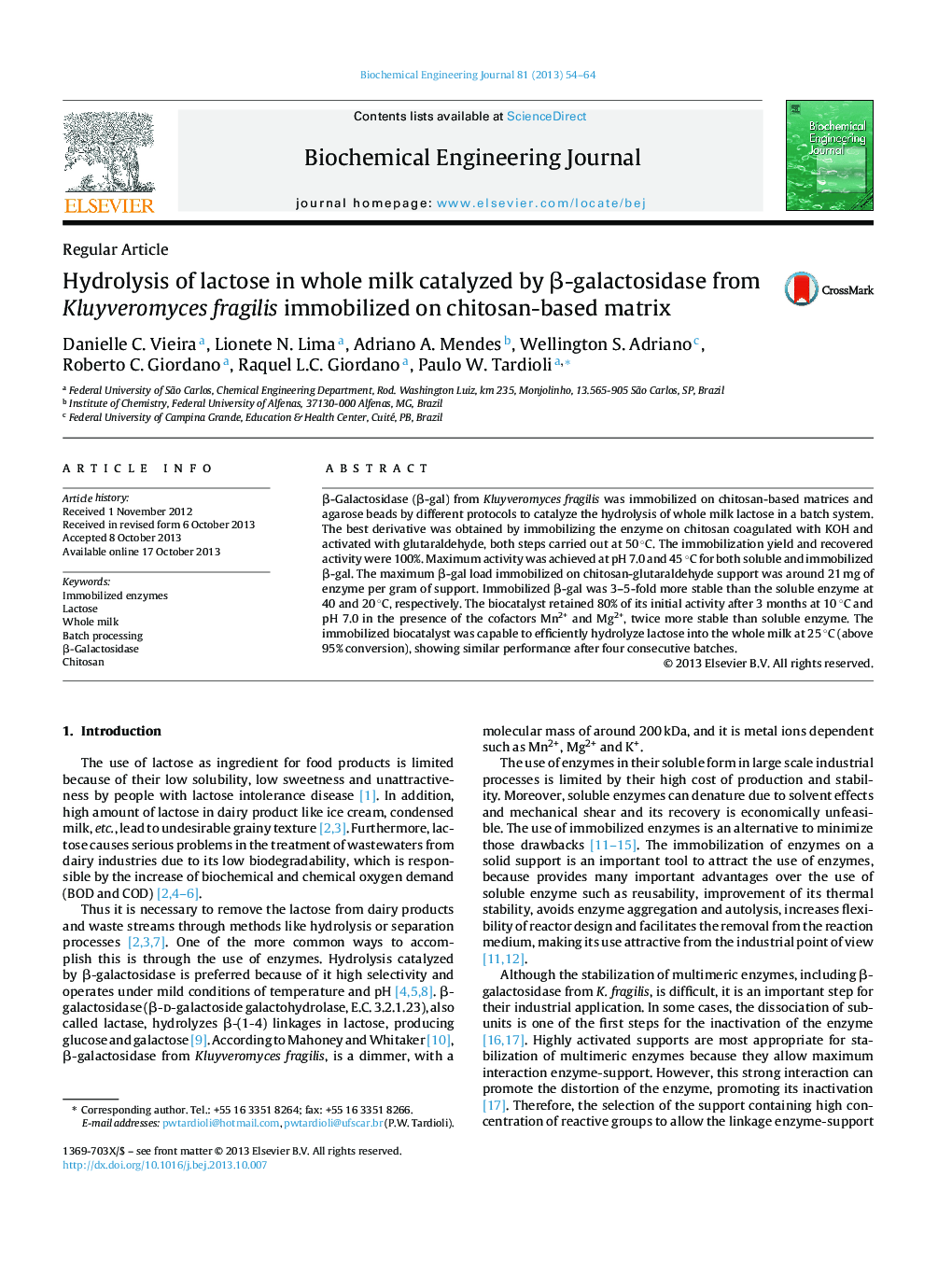| Article ID | Journal | Published Year | Pages | File Type |
|---|---|---|---|---|
| 3218 | Biochemical Engineering Journal | 2013 | 11 Pages |
•β-gal from K. fragilis was immobilized on organic supports by different protocols.•β-gal linked on glutaraldehyde-chitosan showed the best catalytic properties.•Glutaraldehyde-chitosan allowed to immobilize high concentration of the enzyme.•The biocatalysts presented high storage, operational and thermal stabilities.•Immobilized β-gal hydrolyzed efficiently lactose in whole milk by batch system.
β-Galactosidase (β-gal) from Kluyveromyces fragilis was immobilized on chitosan-based matrices and agarose beads by different protocols to catalyze the hydrolysis of whole milk lactose in a batch system. The best derivative was obtained by immobilizing the enzyme on chitosan coagulated with KOH and activated with glutaraldehyde, both steps carried out at 50 °C. The immobilization yield and recovered activity were 100%. Maximum activity was achieved at pH 7.0 and 45 °C for both soluble and immobilized β-gal. The maximum β-gal load immobilized on chitosan-glutaraldehyde support was around 21 mg of enzyme per gram of support. Immobilized β-gal was 3–5-fold more stable than the soluble enzyme at 40 and 20 °C, respectively. The biocatalyst retained 80% of its initial activity after 3 months at 10 °C and pH 7.0 in the presence of the cofactors Mn2+ and Mg2+, twice more stable than soluble enzyme. The immobilized biocatalyst was capable to efficiently hydrolyze lactose into the whole milk at 25 °C (above 95% conversion), showing similar performance after four consecutive batches.
Graphical abstractFigure optionsDownload full-size imageDownload as PowerPoint slide
